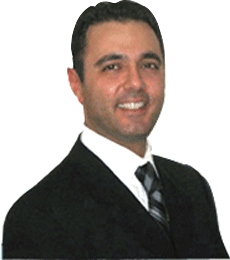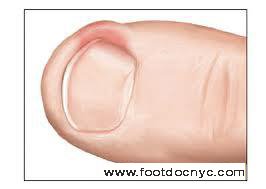Podiatric Care - Relief with Treatments
By Isaac Tabari
ANKLE SPRAINS?
Dr. Tabari will look at your ankle and ask about your symptoms. You may also have x-rays to rule out a broken bone. Treatment will depend on how bad your sprain is. For a severe sprain, healing may take 3 months or more.
BUNIONS
Dr. Tabari can tell if you have a bunion from the look and feel of your big toe. In some cases, you may have x-rays to rule out arthritis. Although a bunion won't go away, wearing shoes that fit properly will often relieve the pain. Padding and icing the bunion may also help. Orthotic control is always necessary to control and stop the progression of the bunion. Bunions that remain painful may need surgery.
HEEL PAIN
Dr. Tabari will check your foot and ask about your pain. Be sure to tell him exactly where your heel hurts. To treat your pain, you may need to make changes in what you do and the shoes you wear. You may also need to do exercises to stretch the tissue. The tissue can take 6 months or more to fully heal. In most cases, orthotics are necessary to correct the problem.
METATARSALGIA
Dr. Tabarican most often tell if you have metatarsalgia by the look and feel of your foot. In most cases, wearing low-heeled, well-cushioned shoes and filing down the callus will relieve the pain. If these don't work, your doctor may suggest surgery to remove part of the bone. Dr. Tabari may suggest special insoles and even surgery.
NEUROMA
Dr. Tabari can diagnose a neuroma by checking your foot. Treatment may include wearing wider shoes, soaking or icing the foot, and putting a special pad in your shoe. You may also be given medication. These steps most often relieve the pain. If not, your doctor may suggest surgery to cut the ligament or remove the nerve.
PLANTAR FASCIITIS
You can't stay off your feet altogether, but you can reduce overuse and the risks that
come with it. Also, be sure to follow your doctor's treatment plan. Take all medications as directed and wear your orthotics all the time
Reduce Overuse
Every time your foot strikes the ground, the plantar fascia is stretched. You can reduce the strain on the plantar fascia and the possibility of overuse by following these suggestions:
- Lose any excess weight.
- Avoid running on hard or uneven ground.
- Wear shoes that support your arch.
TOES
Dr. Tabari will examine your feet carefully. He or she will check for corns and calluses and bend your toes to see if the joints are still flexible. You may also have x-rays to rule out arthritis. Buying shoes with more room in the toes, filing down corns and calluses, and padding the toe most often relieves the pain. If these steps don't work, you may need surgery to straighten the toes.
WARTS
There are many ways to treat warts, depending on their size and location. Medication or surgical removal, or both,
may be effective treatments. Oral and topical medications in combination with freezing may also be effective treatments.
A few of the possible treatment methods are described below: surgical removal, cauterization, and laser are other options. Even after warts are removed, they may recur.
Medication
The wart is broken down by applying an acidic medication. Blister-forming medication may also be used. Treatment may need to be repeated over several weeks.
Curettage
The wart is removed with a small, spoon-shaped instrument (curette). To lessen pain, a local anesthetic is often used with this procedure.
Laser
The wart is vaporized, using focused light energy produced by a laser. To lessen pain, a local anesthetic is often used with this procedure.
BLACK-AND-BLUE NAILS
Treatment
If pain is severe, the nail may be removed, or a hole may be drilled in the nail to allow drainage, which relieves the pressure. A local anesthetic may be used. Pain may also be relieved with prescription medications, or by soaking or icing the area. If pain is not severe, you may not need special treatment. The nail can be thinned or left alone to fall off. A new nail should grow to replace it.
INGROWN NAILS
Treatment
If the nail is not infected, Dr. Tabari may trim the corner of it to help relieve your symptoms. For a partially ingrown nail, Dr. Tabari may need to remove one side of your nail back to the cuticle and treat the base of the nail. Severe infections or totally ingrown nails may require antibiotics and temporary or permanent removal of the entire nail. To lessen pain, a local anesthetic may be used in these procedures.
THICKENED NAILS
Treatment
If the nail isn't infected, Dr. Tabari may be able to thin it by filing or grinding. If a fungal infection is present, oral or topical anti-fungal medications may be needed. This can help prevent ulcerations under the nail while keeping the fungus from spreading to other nails. If pain is extreme, the nail can be surgically removed.
***This material is only provided as helpful information and not as medical advice and you should consult with your foot doctor or another medical doctor for a professional diagnosis. ***
For more information on foot and ankle podiatry services and to make an appointment with best Foot Relief podiatrist - foot doctor, please call us at (212) 288-3137 or click below to make an appointment:

|










